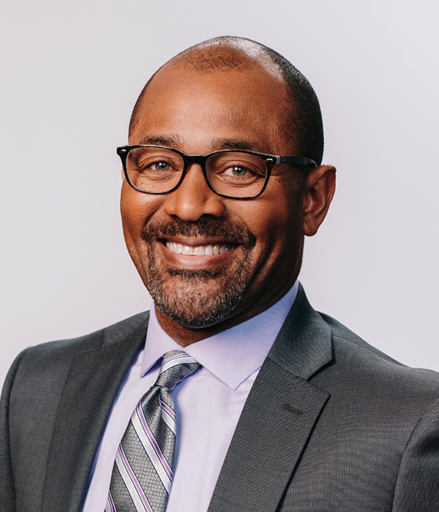Before Timothy Johnson joined Denver-based workers’ comp insurer Pinnacol Assurance in July 2021 as the chief human resources officer, he already knew what kind of workplace would best fit his own desired lifestyle. “At Pinnacol, it’s really building a culture of caring,” he says. “And that’s really what attracted me to Pinnacol — that it was a culture that was really established in terms of caring for one another.”
But don’t just take his word for it. Because of that “culture of caring,” which champions the idea that colleagues recognize each other and their customers as whole people, The Denver Post has named Pinnacol a Top Place to Work every year since 2019.
A big part of that culture is to consider the well-being of each person, starting with top leaders. [See 5 Ways to Bring Balance to the C-Suite.]
Read on for an edited excerpt from our exclusive interview.
Senior Executive: How do you define well-being when it comes to your work…for yourself, as well as when you’re planning for employee strategy? How does well-being play into your plans?
Timothy Johnson: When I think about wellness and leadership capability, they go hand in hand… It starts with the leader taking care of themselves. For me personally, the things that I do [are] run, play basketball, and the things that I love, like coaching and fishing. I carve out that time. Everyone that knows me knows that I coach my son in basketball. Every Monday and Wednesday from seven to nine, I’m going to middle school coaching his AAU team. And that time for me is sacred. It’s my time with him. It’s my time to run around with the kids because we usually scrimmage for 20, 30 minutes. I get a lot of cardio with that. But that’s important to me and so that really fills my cup.
Part of it is really being a role model. Part of the reason I’m real vocal about what I do and how I do it is so that others feel comfortable with carving out time for themselves in terms of what works for them.
…Leaders have to remind people of what’s most important because sometimes people lose sight of it. And I will be honest, I was one of those that lost sight of it early in my career. I’ve worked for some pretty blue-chip kind of companies. And the early part of my career was just about climbing a ladder. I wasn’t coaching anything. All I did was work… But what I realized is that at the end of the day, people aren’t going to judge me, or more importantly I’m not going to judge myself, by whether or not I was a CEO or chief HR officer. I’m gonna judge myself by what I do along the way with the people I care most about.
Senior Executive: What brought you to that realization?
Timothy Johnson: When your kids start having events and they don’t even invite you to it, something’s wrong… That’s what really happened with me. My son was on the debate team, and I asked him how come he didn’t invite me because he invited my wife. And he said, “You don’t go to anything. All you do is work. So then I noticed that’s what’s important to you.”
That’s like taking a fork and sticking it right in your heart. And so that was an eye-opener for me. Something was wrong, and what was wrong was work was most important, not family and not making time to do the things that are really important around family… And I said, you know what, I’m not missing stuff like this anymore.
Senior Executive: What are some of the things that you’ve done for yourself to really carve out that time?
Timothy Johnson: I tell everyone around me that this is what’s important. They know Mondays and Wednesdays…that I’m coaching every week. Call me if there’s something that goes on, and try to wait to catch me before the practice or after the practice.
Also, I put it on my calendar. I put drive time on there. So it’s really just about being intentional… We had a board meeting and we had a playoff tournament coming up and I needed to leave the board meeting 15 minutes early. I made it to the board meeting. I was there for like 85% of the board meeting, but I left 15 minutes early because I had to drive 45 minutes to make it to practice. And I didn’t think twice about it. One of the board members said, “Good for you.”
Senior Executive: It sounds like you have such a great work culture there that you are able to be a role model in this way.
Timothy Johnson: My organizations have been very supportive. So we have a CEO whose son is going to college. To travel to different universities, he was off for two weeks. That by itself sends a message to the organization that this is something I have got to do family-wise. I’m committed to doing it. I’m doing it.
Senior Executive: How do you teach [younger potential leaders] that lesson that you learned? And how do you teach them about setting up those boundaries as they’re looking to advance early on in their career?
Timothy Johnson: Well, a key part of it will be — I mentioned the 70/20/10 [learning model] — 20% learn from others. [Editor’s note: see Johnson’s explanation of this concept in How This Top Denver Workplace Leads By Listening.] We will have guest speakers doing some of the training sessions which will be their senior leaders that will really come in and tell their story. So I fully expect to go in and tell people what was a turning point for me because I believe in being transparent and sharing stories. Stories sometimes are the best teacher.
“Part of it is really being a role model. Part of the reason I’m real vocal about what I do and how I do it is so that others feel comfortable with carving out time for themselves in terms of what works for them.”
Senior Executive: Does the company have any specific practices that you all employ in order to enable employees to create that balance for themselves and create that time? Any no-meeting blocks or things like that?
Timothy Johnson: Different departments do it differently. In HR, we have no-meeting Fridays. I would say probably 80% of the time, there’s no meetings. Sometimes it’s something that comes up as urgent, you end up having a meeting, but like tomorrow, I literally had no meetings planned, and my daughter is visiting this week, so I took Friday off. It was easy for me to take the Friday off, because I didn’t have anything planned. It’s because I have no-meeting Fridays. We use Friday… to catch up on projects, so most of the team, they just carve out time to work on projects. That’s part of the challenge sometimes, particularly in the Zoom world: You could spend all day meeting, meeting, meeting, and you don’t get any work done. So no-meeting Fridays.
Senior Executive: Are there any other tools that the company uses or encourages employees to use in order to block off their schedule?
Timothy Johnson: Well, you have lots of folks who will put on their calendar whether or not it’s personal time. A couple of things that we do is we have an employee assistance program. So in those situations where someone is in a bad place, we try to point them to our EAP to get some assistance. We also have a grant and loan program where sometimes people get in financial bad shape, where depending on the nature of it, we’ll consider giving them a loan, interest free, or giving them a grant.
Also a big part of it is really just leaders connecting with their team. I would say probably one of the most important things that can happen is for a leader to have a sense for how every employee on their team is doing, emotionally, health-wise. And the only way you notice is to be intentional about it because they — for us in particular, most of our employees — are working from home. And so the days of walking by someone’s cube in somebody’s office and seeing their facial expression or noticing something that may be a little bit disturbing on their part in terms of just the look, you can’t see that unless you just make some time to talk with someone about how they’re doing. That was part of what our session was focused on yesterday: take time to make sure your people are okay. You have to be intentional about it… Make time to ask, “How are you doing? Is everything okay?”
…I have someone on my team. Her daughter does gymnastics. Her daughter messed her knee up and had to have surgery. It was basically infected. [A week ago,] we had a compensation call at like nine o’clock that morning, the day before she had surgery. And as soon as the call started, I could tell that she wasn’t doing great. She told me about the surgery, the fact that it was infected, and I said, “Well, why are you on this call? I don’t want to be on the call right now. I don’t want to talk about compensation right now. Let’s get off the call. Go attend to your daughter.” And we need leaders to do that: if there’s something that comes up about the employee and about their employee’s family or something like that, we have to make sure that people keep the right priority. Just take care of your family.
But you have to remind leaders of that because sometimes work trumps doing the right thing. And so to me, that’s what leadership programs are about: if they hear things multiple times, and they see their leaders role modeling the behavior that we want, then they’re more likely to exhibit those behaviors and be on the lookout for something that they need to kind of point someone in a direction that is really doing what’s right by people.
Senior Executive: Right. And how does that play into business results? I mean, if you need to make the case that well-being is good for the business and worthwhile, do you have measures to look at and consider in your planning?
Timothy Johnson: Well, our business results have been pretty good. And we track it every quarter. We present on it every quarter. And we look at the correlation between our engagement scores and business results. And there’s a strong correlation between the two. We’re probably close to a high point in terms of overall morale, and we’re having some of our best business results. In fact, as part of the feature work effort, we have an individual that does financial analysis. He did some analysis around, before COVID, what were our business results like? And since we’ve been in this virtual work environment, have the business results dropped off? And there was no correlation in terms of a drop off or anything. Our business results were better. And so he concluded in this review with the executive team that our flexible work arrangement, we believe, has contributed to us to perform even better than we have performed in the past. [Editor’s note: At Pinnacol, each employee can choose how they work — on site, remote, or hybrid.]
Senior Executive: That’s great. What kinds of company gains are we talking about?Timothy Johnson: Some revenue. Some customer experience… and we’re at high points. We do Net Promoter Score with regard to claims, the feedback that we get from the people that do file claims with us. We have some of the highest scores that we’ve ever had around the claims experience. And so there’s a lot of business metrics that we’ll look at and we’ll track.







